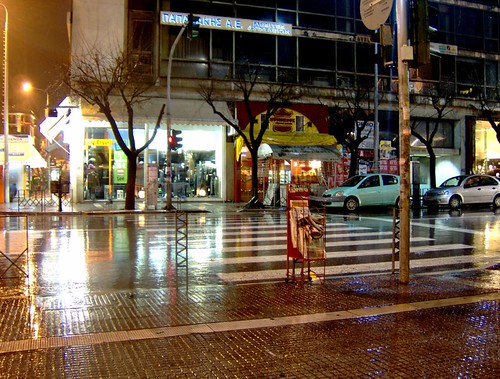
Tsimiski St, originally uploaded by teacher dude in Greece.
Last year talked about how students could use their digital cameras to create a photo dictionary. The idea was that they could take pictures of everyday scenes such as a street, classroom, party etc. and label them using programs such as Word .
However, a nice, new shiny application by Flickr has made this even simpler. As many of you know, you can label different parts of your photos when you post them to Flickr. So, this is a great opportunity or students to learn and practice naming everyday objects.
When you click on your picture, look for the Add Note option which is above the image, on the left-hand side. Then just place the square where you want and add a description.
The potential for this technique doesn't just end with learning languages, it could be used in all kinds of learning situations where you need to know the different parts of an object. Imagine using it in biology lessons to name bones, in architecture to show different features etc. It is a great way to revise your knowledge using real life examples.
4 comments:
Hi Craig, are you Teacherdudein Greece? I copied your Tsimiski St. idea of a pictionary at my Blogger blog http://itwilldefinitelywork.blogspot.com/ but did not know who teacherdude was.
I am a participant at the OWP EVO session and will try to follow your advice of posting ppt with Slidestory. Thanks for the wonderful tips. Cariños y saludos, Berta
Yes, I am. I'm glad you found the idea useful, please tell others.
What is the OWP EVO?
One of the ways to use Flickr I suggest is to use the search facility as a visual dictionary. It's great. You can type a fairly abstract term into the search box and get a whole bunch of concrete examples back. I usually demo this by typing "happiness" and then switching the results page view to thumbnails of the interesting pictures. You can enter a few more words, taking suggestions from the class and discuss the results.
It's also a great way to revise everyday vocabulary. I'm getting my students to take a picture of their living room, kitchen etc and label it using the Add Notes feature on Flickr.
Post a Comment